MARKET OVERVIEW
The Global Lightweight Conveyor Belts market lies at the core of industries focused on material handling efficiency and its processing. With its innovative approaches, it forms a niche in food processing and logistic industries and is likely to undergo major developments in the years to come. As businesses around the world strive to be more productive and cost-effective, lightweight conveyor belts lend the required versatility to accommodate such demands. They gain an upper hand in handling variable loads and working effectively under variable environmental conditions, thus gaining them a reputation as indispensable tools in modern industrial operations.
The lightweight conveyor belt is different mainly by its construction, which primarily encompasses materials like PVC, PU, and some synthetic polymers. These materials provide light weight to the belts, helping in decreasing energy consumption and maintenance costs. The focus on sustainability of the market will only further increase, which then drives innovations toward making the belts eco-friendlier without compromising on performance. This focus falls in line with the global trend towards reducing carbon footprints. Therefore, manufacturers in the Global Lightweight Conveyor Belts market will continue to work towards developing products based on these parameters.
Lightweight conveyor belts find various application fields, ranging from packaging and distribution down to food processing. In terms of the food industry, these belts are highly valued because cleaning and maintenance can be done on them. That simply translates into increasing the demand for lightweight conveyor belts in the Global Lightweight Conveyor Belts market in the need by food manufacturers to better their operations in the light of strict hygiene standards. Such adaptability of these belts makes them suitable for the transportation of delicate items without causing damage, and that feature is highly sought after in the industries dealing with perishable goods.
It is technological advancement that will characterize the Global Lightweight Conveyor Belts market, and innovations have been focused on enhancing efficiency and durability. In the near future, the conveyor belts will be drastically changed by the integration of sensors and automation systems to provide monitoring in real-time and adjust to optimize performance. This integration of technology will not only enhance operational efficiency but also extend the life of the belts through predictive maintenance. Companies investing in such developments will likely benefit from a competitive advantage due to the ability to facilitate solutions that reduce downtime and increase productivity.
Geopolitical factors will also impact the Global Lightweight Conveyor Belts market; new business opportunities will come through emerging markets. During the process of industrialization, countries in Asia, Africa, and South America will demand efficient material handling solutions. These opportunities will have old players and new entrants jostling for them in the market, spurring competition. Products will have to meet specific requirements of such diverse markets in offering effective solutions at cost-effective measures.
Environmental-related concerns are also going to be very instrumental in shaping the Global Lightweight Conveyor Belts market. The manufacturer will be compelled to devise products whose impact on the environment is reduced along the value chain. This includes using recyclable materials and making energy-efficient systems that support the global sustainability agenda. Eco-friendliness is likely to force companies and environmental organizations into partnerships or collaborations that will result in innovations, setting new standards for industries.
Unless otherwise stated, today's modern industries are really forcing a sea change in the global lightweight conveyor belts market. On the other hand, it will maintain being an important factor in efficient industrials around the globe by touting the leaven of sustainability, technological advancement, and geographical expansion into developing markets. It is in innovating and meeting the changing needs of its clientele that the future market will be paved toward the continued relevance and growth of the global economy. As much as businesses are looking toward optimizing material-handling processes, demand for lightweight conveyor belts is going to rise, further sealing their significance in the industrial scenario.
Global Lightweight Conveyor Belts market is estimated to reach $8,239 Million by 2031; growing at a CAGR of 4.2% from 2024 to 2031.
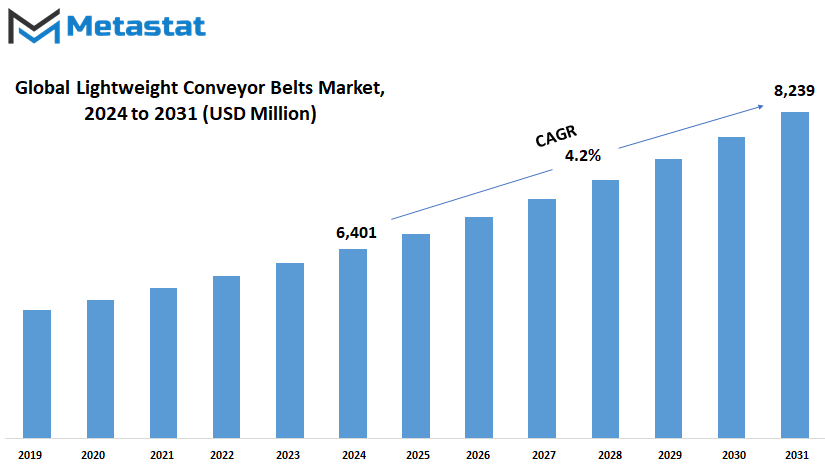
GROWTH FACTORS
The Global Lightweight Conveyor Belts market lies at the core of industries focused on material handling efficiency and its processing. With its innovative approaches, it forms a niche in food processing and logistic industries and is likely to undergo major developments in the years to come. As businesses around the world strive to be more productive and cost-effective, lightweight conveyor belts lend the required versatility to accommodate such demands. They gain an upper hand in handling variable loads and working effectively under variable environmental conditions, thus gaining them a reputation as indispensable tools in modern industrial operations.
The lightweight conveyor belt is different mainly by its construction, which primarily encompasses materials like PVC, PU, and some synthetic polymers. These materials provide light weight to the belts, helping in decreasing energy consumption and maintenance costs. The focus on sustainability of the market will only further increase, which then drives innovations toward making the belts eco-friendlier without compromising on performance. This focus falls in line with the global trend towards reducing carbon footprints. Therefore, manufacturers in the Global Lightweight Conveyor Belts market will continue to work towards developing products based on these parameters.
Lightweight conveyor belts find various application fields, ranging from packaging and distribution down to food processing. In terms of the food industry, these belts are highly valued because cleaning and maintenance can be done on them. That simply translates into increasing the demand for lightweight conveyor belts in the Global Lightweight Conveyor Belts market in the need by food manufacturers to better their operations in the light of strict hygiene standards. Such adaptability of these belts makes them suitable for the transportation of delicate items without causing damage, and that feature is highly sought after in the industries dealing with perishable goods.
It is technological advancement that will characterize the Global Lightweight Conveyor Belts market, and innovations have been focused on enhancing efficiency and durability. In the near future, the conveyor belts will be drastically changed by the integration of sensors and automation systems to provide monitoring in real-time and adjust to optimize performance. This integration of technology will not only enhance operational efficiency but also extend the life of the belts through predictive maintenance. Companies investing in such developments will likely benefit from a competitive advantage due to the ability to facilitate solutions that reduce downtime and increase productivity.
Geopolitical factors will also impact the Global Lightweight Conveyor Belts market; new business opportunities will come through emerging markets. During the process of industrialization, countries in Asia, Africa, and South America will demand efficient material handling solutions. These opportunities will have old players and new entrants jostling for them in the market, spurring competition. Products will have to meet specific requirements of such diverse markets in offering effective solutions at cost-effective measures.
Environmental-related concerns are also going to be very instrumental in shaping the Global Lightweight Conveyor Belts market. The manufacturer will be compelled to devise products whose impact on the environment is reduced along the value chain. This includes using recyclable materials and making energy-efficient systems that support the global sustainability agenda. Eco-friendliness is likely to force companies and environmental organizations into partnerships or collaborations that will result in innovations, setting new standards for industries.
Unless otherwise stated, today's modern industries are really forcing a sea change in the global lightweight conveyor belts market. On the other hand, it will maintain being an important factor in efficient industrials around the globe by touting the leaven of sustainability, technological advancement, and geographical expansion into developing markets. It is in innovating and meeting the changing needs of its clientele that the future market will be paved toward the continued relevance and growth of the global economy. As much as businesses are looking toward optimizing material-handling processes, demand for lightweight conveyor belts is going to rise, further sealing their significance in the industrial scenario.
MARKET SEGMENTATION
By Type
The global lightweight conveyor belts market is about to prosper exponentially in the coming years due to innovations in technology and demand for more excellent and greener industrial solutions. Lightweight conveyor belts find their application in a host of industries because of their versatility, durability, and efficiency in the transportation of materials. Those belts, in a way, enhance handling and processing capabilities and make for operational efficiency across different sectors like food processing, logistics, and manufacturing.
Lightweight conveyor belts are normally segmented by type, wherein most of them fall under categories like lightweight rubber, non-woven belting, and PU/PVC. Each of the types has different advantages that give them best fits to specific industrial requirements. Lightweight rubber belts have very high resilience and flexibility, thus making them fit for high speed applications. The other, non-woven belting, finds its place in almost every application due to its low cost and ease of maintenance. PU/PVC belts are known for resistance to chemicals and abrasion; hence, they have a rather significant place in food-grade applications.
As industries increase their tempo of automation and technological advancement, lightweight conveyor belts will see demand rising. These will then become essential in companies' efforts to ensure a more streamlined production line with reduced downtime. In addition, manufacturers are currently developing eco-friendly materials for conveyor belts that have low environmental impact yet meet performance standards.
In the future, further innovations are fleshed out with the implementation of intelligent technologies in the Global Lightweight Conveyor Belts market. New developments would enable real-time monitoring and predictive maintenance, further strengthening life and reliability expectations from conveyor systems. The condition of the belts could be effectively monitored with sensors and IoT devices installed, thereby intervening at the right moment to prevent disruptions.
Another driver for the growth of the lightweight conveyor belts market will be the e-commerce and logistics sectors. Increasing volumes of goods moved around the world translate to efficient material handling systems. Conveyor belts are practical solutions to manage high throughputs, ensuring that the product is delivered on time, thereby keeping up with the fast pace of today's supply chains.
By Application
The Global Lightweight Conveyor Belts market is on the verge of experiencing radical changes due to new demands from industries and new technologies. These market segmentations come in terms of key applications, including the food industry, logistics industry, printing and packaging industry, textile industry, and more. Each of these sectors is going to further drive different demands and innovations in the market, shaping its future landscape.
In the food industry, there will be lightweight conveyor belt demand driven by increasing focus on efficiency and hygiene. These belts will ensure smooth and faster transport of food products at processing and packaging stages with enhanced durability and cleanability to address concerns for contamination and operational downtime. Given the food production facilities are going to face a greater shift towards attainment of enhanced standards in performance, the use of advanced lightweight conveyor belts will be more widespread.
Another high-impact industry resulting from advancements in lightweight conveyor belt technologies will be the logistics sector. The need for efficient material handling solutions will drive demand for belts capable of handling different products without compromising on high performance. Belt design and material innovations raise load capacities and reduce maintenance costs. As the e-commerce and global trade continue to boom, the reliance on lightweight conveyor belts by the logistics sector is bound to be there for efficient operation and high output.
In the printing and packaging industry, precision and flexibility play an important role. Lightweight conveyor belts will support the handling of different types of printed materials and components of packaging. In this case, size and shape adaptability will be of vital importance for easy transitions from one line of production to another. Further development in this respect will aim at producing belts that are more versatile and less wearing.
The textile industry will benefit from the lightweight conveyor belts, as these belts will handle delicate fabrics and materials properly. A desire for belts that can move light and heavy textile products without destruction will motivate innovation. Its features will be enhanced in strength and resistance to abrasion since it is what the textile manufacturers look forward to: a solution that will withstand high-speed production environments.
Growth in the lightweight conveyor belts market will also be provided by other industries. Areas of application include industries like automotive, pharmaceuticals, and electronics. All these industries have their own special requirements that lightweight conveyor belts will cater to through their versatility, finding an important place for them among a wide array of applications within production and processing house environments.
In the future, progress in technology and material science will also play a significant role in the Global Lightweight Conveyor Belts market. Further development of lightweight conveyor belts is driven by increasing demands on efficiency and performance in industrial applications. A trend toward more specialized and higher-performance solutions will unfold in the lightweight conveyor belt market, whereby higher operational efficiency will be achieved and diversified requirements of various applications will be met.
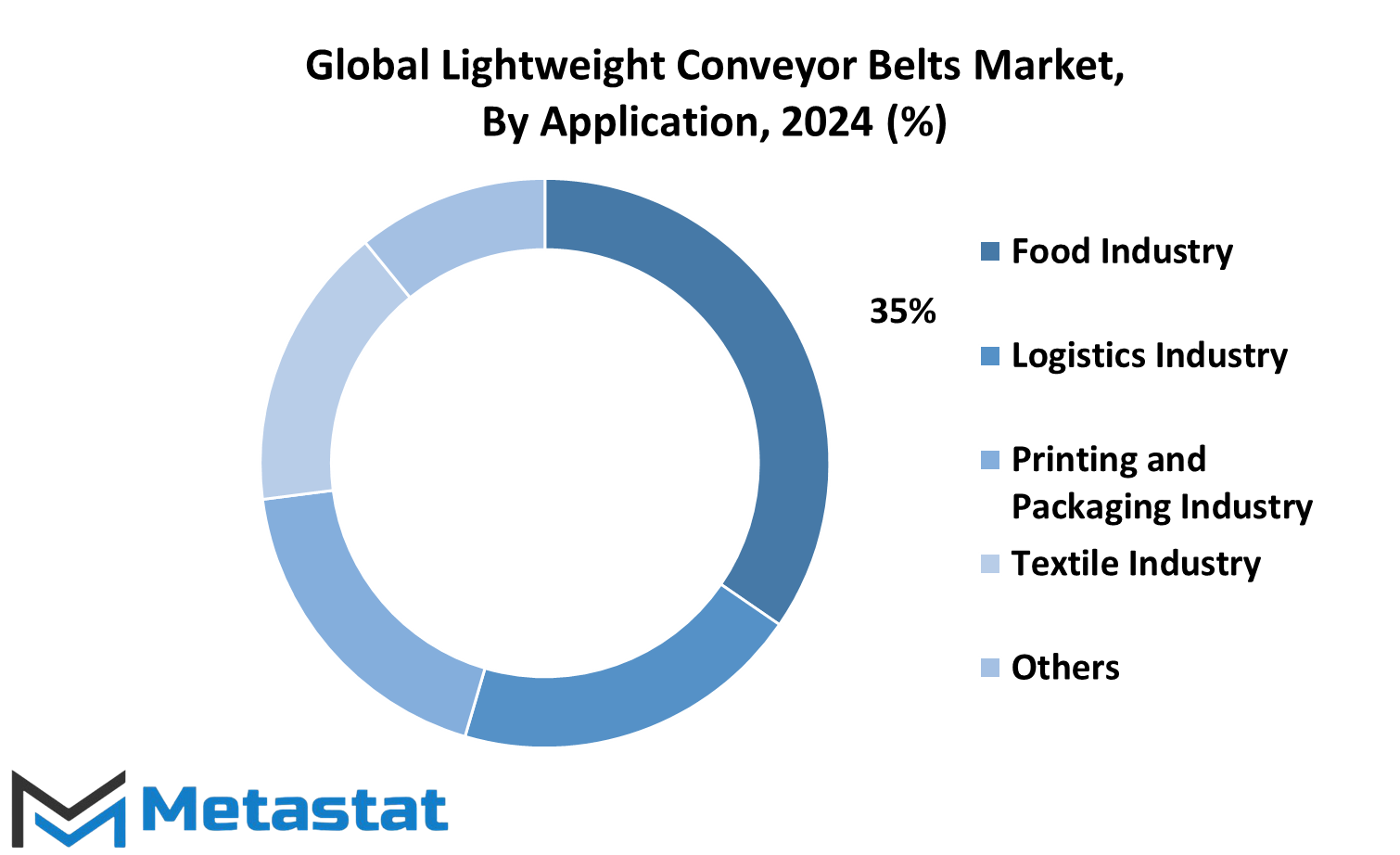
REGIONAL ANALYSIS
The Global Lightweight Conveyor Belts market will witness high changes and growth in various regions, thereby marking a change in industrial needs and technological advancement. Each region would uniquely contribute to the shaping of the market's future.
The lightweight conveyor belts would see high demand in North America due to increasing automation in industries such as manufacturing, logistics, and food processing. This will be further supported by the move of the U.S., Canada, and Mexico toward better efficiency and lower operational costs. The lead will be taken by the U.S. with its high adoption rate for advanced conveyor systems, while Canada and Mexico, respectively, will follow regarding their respective industrial needs and manufacturing capacities.
The growth in lightweight conveyor belts demand will also be noticed in Europe, where countries like the UK, Germany, France, Italy, and other European nations will focus on green sustainability and technology innovation. The key drivers will be Germany and the UK, who will see the adoption of advanced conveyor solutions for automation of operations in industries like automobile and pharma. The industrial sectors in France and Italy will be contributing dynamically; therefore, the broader European market benefits from collective emphases on efficiency and environmentalism.
In the Asia-Pacific region, the market is going to grow strongly in the backdrop of rapid industrialization and urbanization in the region. Countries like China, India, Japan, and South Korea will be at the forefront. This will be driven by China and India, with their large manufacturing bases and growing logistics networks; Japan and South Korea, due to their technological advancement and focus on high-quality conveyor solutions; and the Rest of Asia-Pacific, driven by emerging markets continuing to invest in the modernization of their industrial infrastructure.
The lightweight conveyor belts market will grow at a gradual pace in South America. The rising industrial sectors and investments that go into automation will most likely originate from Brazil and Argentina. The Rest of South America will also contribute to growth, although at a slow rate, as regional industries continue to grow.
Optimistic developments related to the lightweight conveyor belts market will be observed in the Middle East & Africa. The GCC countries will be propelled by Saudi Arabia and the UAE through investments in infrastructure and industrial project executions. A decent contribution is likely to come in from Egypt and South Africa, which have set efficiency enhancement targets in manufacturing and logistics. This will also support the growth of the market from the Rest of Middle East & Africa, where regional economies are diversifying and modernizing.
From 2020, different regional development in the Global Lightweight Conveyor Belts market has taken place, all of which contribute to industrial efficiency and technological innovation. This will become a more integrated and sophisticated market driven by regional strengths and global trends in the future.
COMPETITIVE PLAYERS
Major players in the new Global Lightweight Conveyor Belts Market World Habasit, Ammeraal Beltech, Forbo-Siegling, Derco, Esbelt, Intralox, Mitsuboshi, Nitta, Continental AG, Bando, CHIORINO, Sparks Belting Company, Inc., LIAN DA, Jiangyin TianGuang, Sampla, Shanghai YongLi Belting Co., Ltd, and Volta Belting Technology Ltd.
Habasit is, of course, a major concern with a global view and activity in regard to a wide set of conveyor belts and their components. This brand should hold a firm and leading market position just because of the provisioned quality of delivered products and because of innovative solutions developed. That truth, which can be said regarding Ammeraal Beltech and its solid portfolio, will thus be likely to remain one of the leaders in the industry in providing just the right, specially tailored solutions for the needs of so many varied industries.
Forbo-Siegling has long been associated with technological leadership in the manufacture of light conveyor belts, and the company is bound to acquire more market share with continued technological breakthroughs and strategic partnerships. Derco, for its part, shall also influence the market to a great extent, which is most likely due to the nature of their product ranges and services that respond to very specific needs of the industry.
Esbelt's development of flexible, reliable belts shows that it is a major player in this sector. Esbelt, with its innovation and enhanced range of products, is expected to surge ahead of the rest as the market moves forward. Another very prominent player in the manufacture of modular chain belts, and hence very well-established, is Intralox. It will probably continue to be a strong competitor with much change for improvement and high levels of customer service and satisfaction.
The rich experience and technological knowledge shall further enable Mitsuboshi and Nitta to retain and hold on to the major stakeholders in the market. As such, companies are clearly poised to leverage and sustain the emerging trends and increased demands toward lightweight conveyor belts. Continental AG and Bando, with their full-fledged product portfolio, will remain prominent players offering high-performance solutions to the dynamically increasing demand from various industrial sectors.
In this context, IMAS SA, Chiorino and Sparks Belting Company, Inc. seem destined to take the head by offering products that adapt very well to the new conditions that are imposed on the market. Finally, LIAN DA, Jiangyin TianGuang, Sampla, Shanghai YongLi Belting Co., Ltd. and Volta Belting Technology Ltd. are key players in their quest to continuously advance in meeting the rising demands for niche products and improved belt quality in some applications and regions.
As the Global Lightweight Conveyor Belts market moves ahead, these leading players will assume further importance in shaping its future. They will make sure that the Global Lightweight Conveyor Belts market remains dynamic and accommodative enough for the changing industry.
|
Report Coverage |
Details |
|
Forecast Period |
2024-2031 |
|
Market Size in 2024 |
$6,401 million |
|
Market Size by 2031 |
$8,239 Million |
|
Growth Rate from 2024 to 2031 |
4.2% |
|
Base Year |
2022 |
|
Regions Covered |
North America, Europe, Asia-Pacific Green, South America, Middle East & Africa |
Lightweight Conveyor Belts Market Key Segments:
By Type
- Lightweight Rubber
- Non-woven Belting
- PU/PVC
- Others
By Application
- Food Industry
- Logistics Industry
- Printing and Packaging Industry
- Textile Industry
- Others
Key Global Lightweight Conveyor Belts Industry Players
- Habasit
- Ammeraal Beltech
- Forbo-Siegling
- Derco
- Esbelt
- Intralox
- Mitsuboshi
- Nitta
- Continental AG
- Bando
- CHIORINO
- Sparks Belting Company, Inc.
- LIAN DA
- Jiangyin TianGuang
- Sampla
WHAT REPORT PROVIDES
- Full in-depth analysis of the parent Industry
- Important changes in market and its dynamics
- Segmentation details of the market
- Former, on-going, and projected market analysis in terms of volume and value
- Assessment of niche industry developments
- Market share analysis
- Key strategies of major players
- Emerging segments and regional growth potential




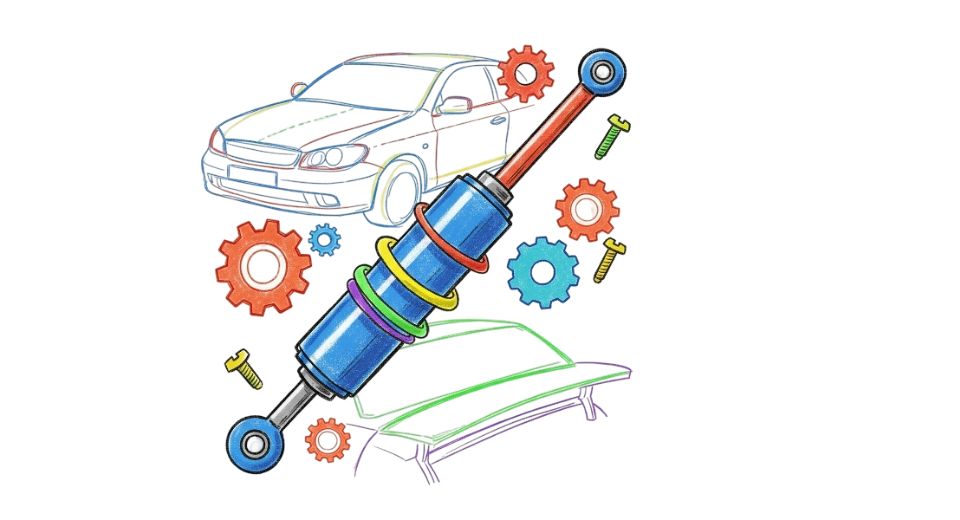
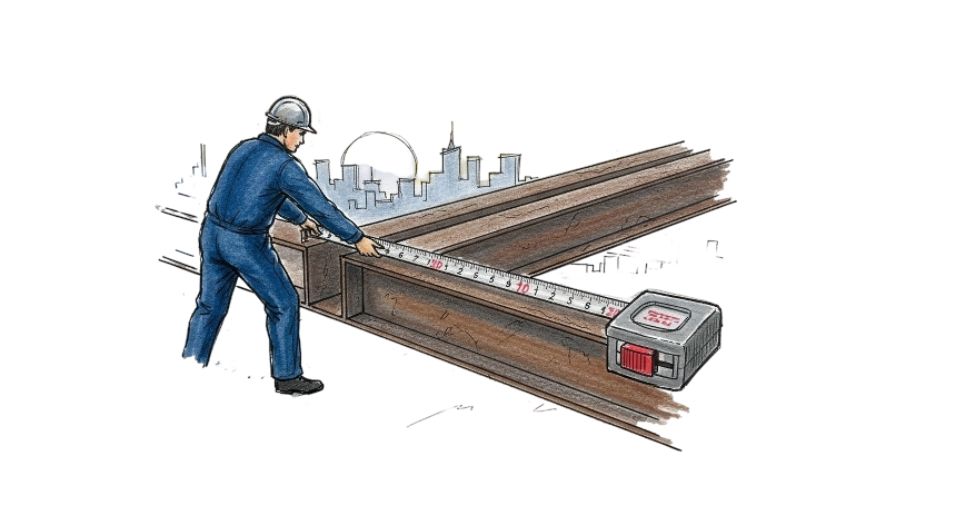
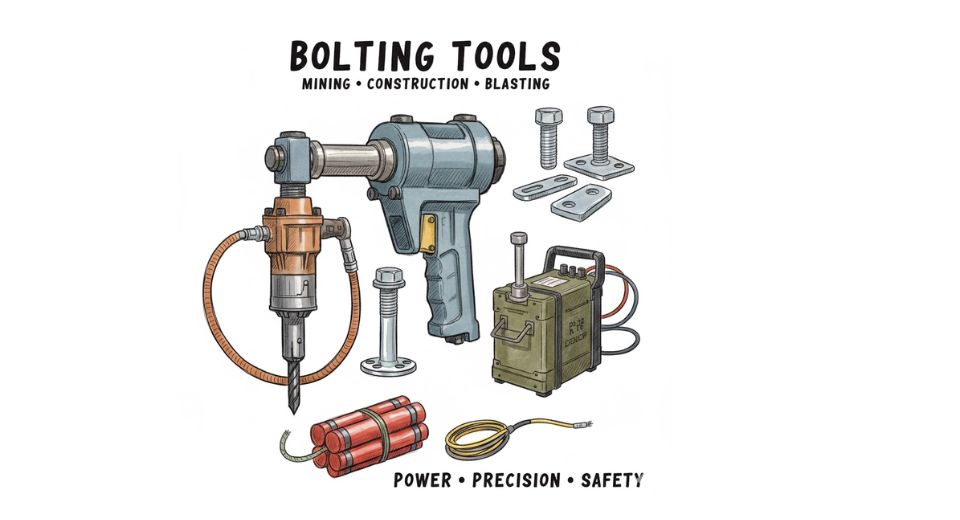

 US: +1 3023308252
US: +1 3023308252






